#judith flanders
Explore tagged Tumblr posts
Text

#judith flanders#book#books#libro#libri#the invention of the murder#read#reading#leggere#lettura#gothic#goth girl#goth aesthetic#goth#black aesthetic#black#nero
4 notes
·
View notes
Text

I was soooo excited to read this book, I had to restrain myself from starting it before I finished the one I'd been reading before, but it's so difficult to read! It's fascinating, but it's academic English, and with English being a foreign language to me it's so slow and bumpy and not flowing. Interesting? Sure. But also impossibly hard. Ten, fifteen pages a day is my limit, I get tired too fast 😭
2 notes
·
View notes
Text
Sambourne House

View On WordPress
#18 Stafford Terrace#19th century British History#20th century British History#Aesthetic Movement#Judith Flanders#Linley Sambourne#Marion Samborune#Punch Magazine#Sambourne House#social history#The Victorian House#William Morris
5 notes
·
View notes
Text
Wot on erf... Started reading Theodora: Actress Empress Saint and there's like... just copy editing stuff within the first few pages... Saying Theodora "had born [sic] a daughter"? It's "borne," sir... Describing an image depicting kids cheering at chariot races, saying "the images of children cheering her [sic] may show us one of Theodora's own activities"? Um... And it's written by this person?
David Stone Potter (born 1957) is the Francis W. Kelsey Collegiate Professor of Greek and Roman History and the Arthur F. Thurnau Professor, Professor of Greek and Latin in Ancient History at The University of Michigan. Potter is a graduate of Harvard (A.B. 1979) and Oxford (D.Phil 1984) universities and specializes in Greek and Roman Asia Minor, Greek, and Latin historiography and epigraphy, Roman public entertainment, and the study of ancient warfare.[1]
You can graduate Harvard and Oxford and not know this stuff? This is like when I was reading Femina by Janina Ramirez and she didn't know the difference between "grisly" and "grizzly." She studied at Oxford too
#sorry but this stuff just makes me sooooooo doubtful and i know it's ridiculous#this is like when judith flanders got a minor detail in catherine eddowes' murder wrong in 'the invention of murder'#and i immediately started doubting the whole book :(
7 notes
·
View notes
Text

Good point! Alfred the Great's daughter Aethelflaed was titled Lady of the Mercians. And the title of queen, even for the wife of a king, was tainted in the eyes of Anglo-Saxon society, allegedly dating from the rule of 8th-century Queen Eadburh, wife of King Beorhtric of Wessex. While there are no contemporary reports of her reign, the 9th century author Asser wrote in his biography of Alfred the Great:
West Saxons do not allow a queen to sit beside the king, nor to be called a queen, but only the king’s wife [because of] a certain obstinate and malevolent queen [from Mercia], who did everything she could against her lord and whole people....
As soon as she had won the king’s friendship, and power throughout almost the entire kingdom, she began to behave like a tyrant after the manner of her father [King Offa of Mercia] — to loathe every man whom Beorhtric liked, to do all things hateful to God and men, to denounce all those whom she could before the king, and thus by trickery to deprive them of either life or power; and if she could not achieve that end with the king’s compliance, she killed them with poison...
With few exceptions, there were no queens under Wessex law until the Norman Conquest, and Matilda may have seen conforming to this custom as a way of softening the idea of a female ruler. (Spoiler: it didn't work.)
"Scholars have offered a number of explanations for why Matilda chose to style herself as domina Anglorum [Lady of the English]. It has been suggested that she might have balked at usage of the term regina, which, translated into the Anglo-Saxon English cwen, implied the wife of a king. The title queen, then, carried with it representational difficulties, as it was the office of king, not queen, that Matilda was seeking. In contrast, the term domina, or hlaefdige in Anglo-Saxon (lady in modern usage), was used to describe a woman exercising political and military power, such as the ninth-century Mercian queen Aethelflaed. As some scholars have suggested, Matilda’s use of the term domina may be related to a wider European usage, as dominus, or lord, described any number of public roles and offices men such as kings performed. Yet another explanation is the convention of kings elected but not yet crowned using the title dominus during the interregnum before their coronation. The title domina Anglorum undoubtedly drew from a number of meanings present in twelfth-century Anglo-Norman society, but all described a woman exercising power. As the Lady of the English, Matilda advertised herself as an individual woman capable of possessing and wielding regal power."
-Charles Beem, "Empress Matilda and Female Lordship", The Lioness Roared: The Problems of Female Rule in English History"
#forgot about that#the exceptions were judith of flanders whose carolingian father insisted#and aelfthryth of wessex to strengthen her sons' claim to the throne#anglo-saxons#hot takes
960 notes
·
View notes
Text

Judith of Flanders (circa 843 – 870 or later) was a Carolingian princess who became Queen of Wessex by two successive marriages and later Countess of Flanders. Judith was the eldest child of the Carolingian emperor Charles the Bald and his first wife, Ermentrude of Orléans. In 856, she married Æthelwulf, King of Wessex. After her husband's death in 858, Judith married his son and successor, Æthelbald. King Ætheldbald died in 860. Both of Judith's first two marriages were childless. Her third marriage was to Baldwin I, Margrave of Flanders, with whom she had several children.
0 notes
Text
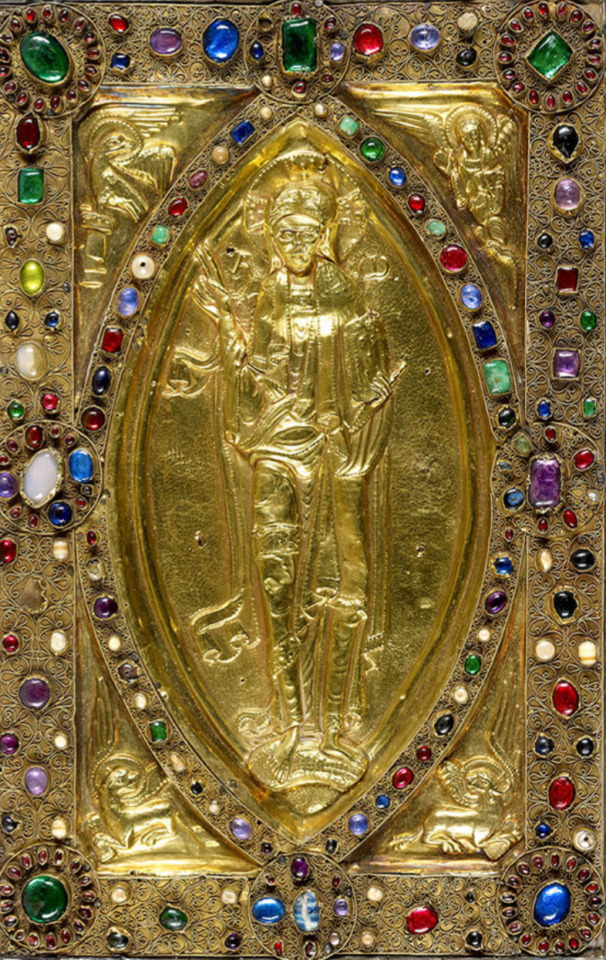
GOSPEL OF JUDITH OF FLANDERS
Jeweled cover with silver-gilt repoussé figures of Christ in Majesty and the symbols of the four evangelists, Continental work, last third of the eleventh century. On: Gospels of Judith of Flanders, in Latin; Canterbury, England, ca. 1060. Manuscript on vellum. Purchased by J. P. Morgan, 1926.
#beautiful books#book blog#books books books#book cover#books#incunabula#book binding#treasure binding#book design#jeweled#11th century#gospel
142 notes
·
View notes
Note
mina what are you reading? more on that what is your taste like I know it's a horrible question but! favourite book?
for pleasure, im reading idaho by emily ruskovich, and for work, im reading overdressed: the shockingly high cost of cheap fashion by elizabeth l. cline, the invention of murder by judith flanders, and a confusion of prophets: victorian and edwardian astrology by patrick curry.
my taste in fiction is biased towards realism and slow burns. anything with family dynamics and complex characters. but if the writing is good, i'll read about anything!
some favorites off the top of my head: notes on an execution by danya kukafka, pew by catherine lacey, ex-wife by ursula parrot, kindred by octavia butler, of human bondage by somerset maugham, a certain hunger by chelsea summers, pachinko by min jin lee.
57 notes
·
View notes
Text
A reminder that you only have until March 12 to have these in!

I’ve come seeking expressions of interest for a project that a few Kinglets and I have developed the concept for in the past few days.
As this year marks our lovely queen’s 60th birthday, we wanted to do a little something to celebrate her.
Knowing how she loves her fans and also values creativity, we thought that a scrapbook would be the best way to do so and are now looking for submissions of letters of appreciation, art which features Alex herself or a character she portrays, and photos of yourself with Alex if you have them. We’d also love it if you could include a picture of yourself to add with your letter (if you’re comfortable with that) so Alex can put a face to the name.
If the idea of any of those seems daunting, a quick Happy Birthday message would also be lovely to add.
If you’d like to take part, please take a moment to register your interest on this poll so that we know how large the book will need to be to accommodate content:
We need these things to be submitted ASAP so the scrapbook can be assembled as it will be presented to her at her next convention appearance (17th-19th March)
If you’d like something to be included, they can be sent to [email protected] by the 12th of March

#kinglets#alex kingston#river song#elizabeth corday#sarah bishop#dinah lance#helen maynard#moll flanders#miranda pond#audrey gratz#judith gray
66 notes
·
View notes
Note
🩹 tending to each other's wounds - whomever you’d like!
Thanks 💙
So this inspired a prequel of sorts to Potiphar's wife
Temptation
Aethelred I of Wessex x fem!spanish princess!reader

“Do you speak our tongue?” the wounded young king asked you and you shook your head. You understood more than you spoke, but when your return home hinges on the gracious nature of Aethelred of Wessex you know better than to try your luck.
“Latin at least?” this you responded with a nod and with words.
“I would be a terrible daughter and even worse Christian if I did not, your grace.” You say as you begin cleaning the wounds he’d sustained fighting off the men who’d raided your father’s kingdom and made a slave out of you.
You were spared the indignity of rape or harsh labor after convincing them to give you to their lord on account of your nobility. But slavery is still slavery, and the daughter of Ramiro of Asturias was meant to be more than the whore of some Viking scum.
Or even the King of the Saxons.
No lady in Europe wanted to be the next Judith of Flanders either. Poor Judith passed on to father and son before she had even had her first blood and if that hadn’t been humiliating enough, forced to sell her things because either the king here before you or his late elder brother was too miserly to send her home properly.
“What is your name?” Aethelred asks, inspecting the bruises your manacles and the collar on your neck had left on you. You had been thrashing like a fiend, screaming until the Kentish nun enslaved with you translated your words.
“Y/N, daughter of King Ramiro and Paterna of Castilla, Princess of Asturias.” You wait for him to look impressed.
He looked at you with suspicion, many would claim nobility to swindle their saviors. Many a slave girl had claimed to be daughters of ealdormen in hopes of being left untouched.
But he doesn’t stop you from tending to him. Even better, he takes the soothing salve from the stand next to him and gently applies it to your neck when you finish.
“I would ask how you came to be here, but I already know about the raid in Castille. Your brother will be told of your rescue, until a ransom is agreed on, you will be my guest in Winchester.” The fingers on your wrists tell you he intends to do more than just ransom you to Orduño.
If his wife were to find herself divorced and sent to a nunnery within the month of your arrival, your ransom will become your dowry and you would only return home as an impoverished widow.
And sure your hand is worth a kingdom, but the men of Wessex fear a woman with power so much that these past kings scandalized them by giving their wives the title of queen.
“I will not become the next Judith of Flanders, the continent still talks about how terrible the Saxons were to her.” You say hoping to kill whatever idea he has about you.
Not that it would matter, your capture already put in doubt your virtue and whatever the king says is law anyways.
Although Aethelred is somewhat handsome and neither an old man nor a child, and Y/N Regina does have a nice ring to it, now that you think about it.
“That was Aethelberht, not I. Judith was like a younger sister to me.” He corrects you and began rubbing the salve on your neck.
It feels damnably good, you feel your face warm up at the feel of his calloused hands being so gentle on you.
“Besides, if I were to wed you, you would return to your brother a widow with several children or at least one in your belly, god willing.” The king adds tilting your face up to force you into looking at him in the eye.
You want to look away, feeling embarrassed at how a somewhat innocuous touch and his certainty at his own words had you tongue tied.
“You have a wife.” You say, not sure if you meant it as a way to stop him from going further or yourself.
“Had a wife, Wulfthyrth died with my eldest son of a plague months ago.” His voice remains steady and releases you now that the mood was ruined.
“I am sorry for your loss.” You should take your leave, and yet you stay. He didn’t sound much in love with her, more sad at his sons death.
Besides with only one son, he would be in need of more and while you may not be a descendant of Charlemagne, you are in the flower of womanhood and have a king for a brother.
God, what are you thinking?
This is the land of the Saxons, everything paved with mud and shit just as Judith had said when you served in her court.
And yet when you arrive in Winchester wearing cleaner and better clothes than what Aethelred found you in, you wonder if Judith was exaggerating.
It was nothing compared to your home country, but it had a hardy charm to it.
Perhaps being queen of the Saxons may be better than being handed off to some lord your brother will sell you to. Even better, the Witan chooses the next king not the order of birth, considering how your brother and father repelled the vikings they would be fools not to cast their lot with you.
The moment you are given time to write to Orduño, you make sure to hint at a match between you and Aethelred, and sure enough, it is not a ransom that arrives with your brother, it is your dowry.

A/N: when Alfred and Aethelred were 9 and 8 respectively, their dad, Aethelwulf took them to Rome, accidentally caused a civil war between his elder sons, Aethlstan of Kent and Aethelbald of Wessex, and married Judith of Flanders who was the 12 year old daughter of Charles the Bald and descendant of Charlemagne.
Judith was then widowed, married off to Aethelbald then widowed again and then forced to sell her things to get a ship back to Flanders where she married Baldwin I, Margave of Flanders.
Divorce was pretty common in this dynasty and irl Uhtred and Edward teh Elder would force their wives to take holy vows so they could divorce them and marry other women(and rinse and repeat)
Aethelred also had two sons who irl had been infants when Alfred was king. Here, Aethehelm died of the plague with the wife Aethelred didn’t particularly love.
12 notes
·
View notes
Note
🦇 🐚
🦇 an appropriately hyped book
The Adventures of Amina Al-Sirafi by S.A. Chakraborty! It had everything and was so much fun. There were definitely a couple of internet meme jokes, which is an easy way to my heart, but it also felt like a classic timeless adventure.
🐚 a book you expected to like but didn't
The Invention of Murder by Judith Flanders. She didn't make her thesis explicit until the end, imo, so all the chapters were like 'why are we talking about this, what is the point you're making?"
2 notes
·
View notes
Text
Ages of French Princesses at First Marriage
I have only included women whose birth dates and dates of marriage are known within at least 1-2 years, therefore, this is not a comprehensive list.
This list is composed of princesses of France until the end of the House of Bourbon; it does not include Bourbon claimants or descendants after 1792.
The average age at first marriage among these women was 15.
Judith of Flanders, daughter of Charles the Bald: age 12 when she married Æthelwulf, King of Wessex in 856 CE
Rothilde, daughter of Charles the Bald: age 19 when she married Roger, Count of Maine in 890 CE
Emma of France, daughter of Robert I: age 27 when she married Rudolph of France in 921 CE
Matilda of France, daughter of Louis IV: age 21 when she married Conrad I of Burgundy in 964 CE
Hedwig of France, daughter of Hugh Capet: age 26 when she married Reginar IV of Hainault in 996 CE
Gisela of France, daughter of Hugh Capet: age 26 when she married Hugh of Ponthieu in 994 CE
Hedwig of France, daughter of Robert II: age 13 when she married Renauld I, Count of Nevers in 1016 CE
Adela of France, daughter of Robert II: age 18 when she married Richard III of Normandy in 1027 CE
Constance of France, daughter of Philip I: age 16 when she married Hugh I, Count of Troyes in 1094 CE
Cecile of France, daughter of Philip I: age 9 when she married Tancred, Prince of Galilee in 1106 CE
Constance of France, daughter of Louis VI: age 14 when she married Eustace IV, Count of Boulogne in 1140 CE
Marie of France, daughter of Louis VII: age 14 when she married Henry I, Count of Champagne, in 1159 CE
Alice of France, daughter of Louis VII: age 14 when she married Theobald V, Count of Blois in 1164 CE
Margaret of France, daughter of Louis VII: age 14 when she married Henry the Young King in 1172 CE
Alys of France, daughter of Louis VII: age 35 when she married William IV of Ponthieu in 1195 CE
Agnes of France, daughter of Louis VII: age 8 when she married Alexios II Komnenos in 1180 CE
Marie of France, daughter of Philip II: age 13 when she married Philip I of Namur in 1211 CE
Isabella of France, daughter of Louis IX: age 14 when she married Theobald II of Navarre in 1255 CE
Blanche of France. daughter of Louis IX: age 16 when she married Ferdinand de la Cerda in 1269 CE
Margaret of France, daughter of Louis IX: age 16 when she married John I, Duke of Brabant in 1270 CE
Agnes of France, daughter of Louis IX: age 19 when she married Robert II, Duke of Burgundy in 1279 CE
Blanche of France, daughter of Philip III: age 22 when she married Rudolf III of Austria in 1300 CE
Margaret of France, daughter of Philip III: age 20 when she married Edward I of England in 1299 CE
Isabella of France, daughter of Philip IV: age 13 when she married Edward II of England in 1308 CE
Joan II of Navarre, daughter of Louis X: age 6 when she married Philip III of Navarre in 1318 CE
Joan III, daughter of Philip V: age 10 when she married Odo IV, Duke of Burgundy in 1318 CE
Margaret I, daughter of Philip V: age 10 when she married Louis I of Flanders in 1320 CE
Isabella of France, daughter of Philip V: age 11 when she married Guigues VIII of Viennois in 1323 CE
Blanche of France, daughter of Charles IV: age 17 when she married Philip, Duke of Orleans in 1345 CE
Joan of Valois, daughter of John II: age 9 when she married Charles II of Navarre in 1352 CE
Marie of France, daughter of John II: age 20 when she married Robert I, Duke of Bar in 1364 CE
Isabella, daughter of John II: age 12 when she married Gian Geleazzo Visconti in 1360 CE
Catherine of France, daughter of Charles V: age 8 when she married John of Berry, Count of Montpensier in 1386 CE
Isabella of Valois, daughter of Charles VI: age 6 when she married Richard II of England in 1396 CE
Joan of France, daughter of Charles VI: age 5 when she married John V, Duke of Brittany in 1396 CE
Michelle of Valois, daughter of Charles VI: age 14 when she married Philip III, Duke of Burgundy in 1409 CE
Catherine of Valois, daughter of Charles VI: age 19 when she married Henry V of England in 1420 CE
Catherine of France, daughter of Charles VII: age 12 when she married Charles I, Duke of Burgundy in 1440 CE
Joan of France, daughter of Charles VII: age 12 when she married John II , Duke of Bourbon in 1447 CE
Yolande of Valois, daughter of Charles VII: age 18 when she married Amadeus IX, Duke of Savoy in 1452 CE
Magdalena of Valois, daughter of Charles VII: age 18 when she married Gaston, Prince of Viana in 1461 CE
Anne of France, daughter of Louis XI: age 12 when she married Peter of Bourbon in 1473 CE
Joan of France, daughter of Louis XI: age 12 when she married Louis XII in 1476 CE
Claude of France, daughter of Louis XII: age 15 when she married Francis I in 1514 CE
Renée of France, daughter of Louis XII: age 18 when she married Ercole II d'Este in 1528 CE
Madeleine of Valois, daughter of Francis I: age 17 when she married James V of Scotland in 1537 CE
Margaret of Valois, daughter of Francis I: age 36 when she married Emmanuel Philibert, Duke of Savoy in 1559 CE
Elisabeth of Valois, daughter of Henry II: age 13 when she married Philip II of Spain in 1559 CE
Claude of Valois, daughter of Henry II: age 12 when she married Charles III, Duke of Lorraine in 1559 CE
Margaret of Valois, daughter of Henry II: age 19 when she married Henry IV in 1572 CE
Elisabeth of France, daughter of Henry IV: age 13 when she married Philip IV of Spain in 1615 CE
Christine of France, daughter of Henry IV: age 13 when she married Victor Amadeus I, Duke of Savoy in 1619 CE
Henrietta Maria of France, daughter of Henry IV: age 16 when she married Charles I of England in 1625 CE
Louise Élisabeth of France, daughter of Louis XV: age 12 when she married Philip, Duke of Parma in 1739 CE
Marie-Thérèse, daughter of Louis XVI: age 21 when she married Louis Antoine, Duke of Angoulême in 1799 CE
21 notes
·
View notes
Note
Hi! Five favourite history books?
Oh this is a tough one:
- SPQR by Mary Beard was the first book that jumped into my head. It's an easy read and a great intro to Ancient Rome.
- The De Cosmos Engima by Gordon Hawkins - primarily because it's the only book written on Amor De Cosmos in the last several decades and it's very digestible. Spent a lot of time with it when I was working on that video a while back
- Ships and Seamanship in the Ancient World by Lionel Casson. I took an entire class on ancient seamanship and it was really cool: i havent cracked the textbook in years but i remember parts of it very clearly. It's not as digestible but a great source of info if you like the ancient world and boats
- Whose Pharoahs? by Donald Malcolm Reid. Discusses the history of Egyptology in Egypt. Quite academic but still a good read. Content is extremely interesting.
- The Victorian House by Judith Flanders - relied on it a lot when I was working at PEH and even got to attend a virtual lecture of hers once.
14 notes
·
View notes
Text

October 18 is the Feast Day of St Luke. He appears here at the start of the Gospel that bears his name in the Evangelium of Judith of Flanders (Cantorbéry, 1065). The Morgan Library & Museum, New York, ms M.709, f° 77v, 29,3 × 19,1 cm. :: [Robert Scott Horton]
* * * *
Night Surrender to Praise at Dawn – Nov. 16, 2021
“In the middle of the night I hold hands with trust and surrender to the One who sees without a light… My prayer travels deep into my soul space, into the essence of my being.
Rising from sleep, I raise high the chalice of my life. Dressed in robes of joyful anticipation, I enter this day with an open heart. This is the awakening hour. This is the hour of praise. ‘O medicine of dawn; O healing drink of morning!’ Offering both words and silence, I join in the dance of creation.”
–Macrina Wiederkehr, Seven Sacred Pauses: Living Mindfully Through the Hours of the Day, p. 29 and 47
[alive on all channels]
#Robert Scott Horton#St. Luke#The Morgan Library & Museum#Gospel of Luke#Night Surrender to Praise at Dawn#Macrina Wiederkehr#prayers#alive on all channels#quotes
11 notes
·
View notes
Text
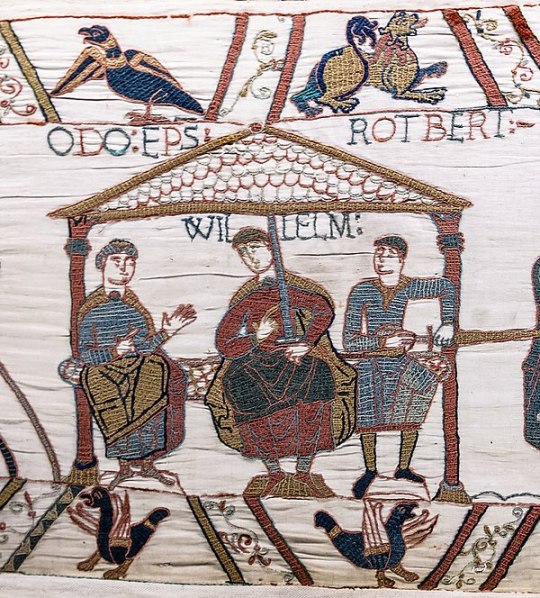

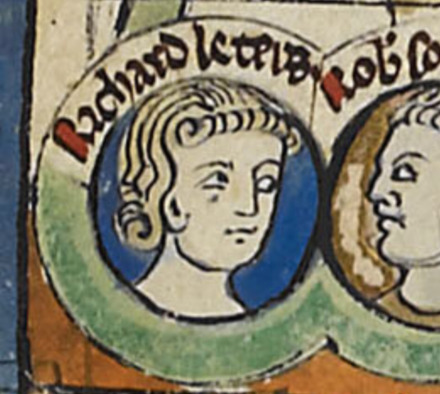
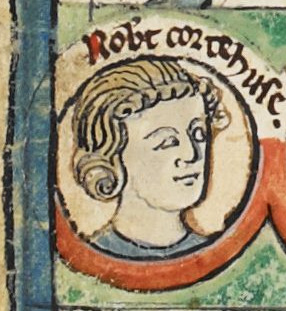
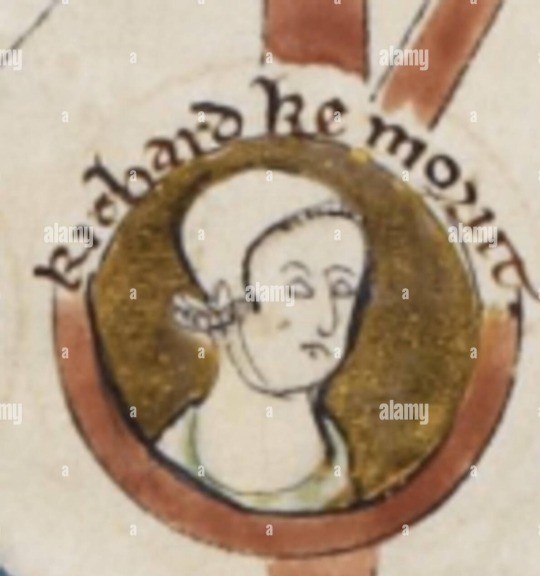
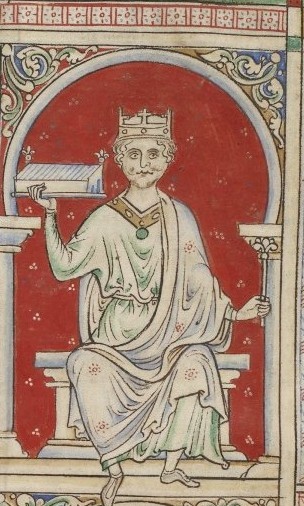

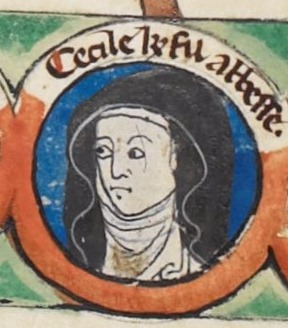


The Bastard Kings and their families
This is series of posts are complementary to this historical parallels post from the JON SNOW FORTNIGHT EVENT, and it's purpouse to discover the lives of medieval bastard kings, and the following posts are meant to collect portraits of those kings and their close relatives.
In many cases it's difficult to find contemporary art of their period, so some of the portrayals are subsequent.
1) William I of England (c. 1028 – 1087), son of Robert I of Normandy and Herleva of Falaise; with his brothers Odo of Bayeux (d. 1097) and Robert of Mortain (c. 1031–c. 1095), sons of Herleva of Falaise and her husband Herluin de Conteville
2) His father, Robert I of Normandy (1000 –1035), son of Richard II of Normandy and his wife Judith of Brittany
3) His uncle, Richard III of Normandy (997/1001 – 1027), son of Richard II of Normandy and his wife Judith of Brittany
4) His son, Robert II of Normandy (c. 1051 – 1134), son of William I of England and Matilda of Flanders
5) His son, William II of England( c. 1057 – 1100), son of William I of England and Matilda of Flanders
6) His son, Henry I of England (c. 1068 –1135), son of William I of England and Matilda of Flanders
7) His daughter, Cecily of Normandy (c. 1056 – 1126), daughter of William I of England and Matilda of Flanders
8) His daughter, Constance of Normandy (c. 1057/61– 1090), daughter of William I of England and Matilda of Flanders
9) His daughter, Adela of Normandy (c. 1067– 1137), daughter of William I of England and Matilda of Flanders
#jonsnowfortnightevent2023#asoiaf#a song of ice and fire#day 10#echoes of the past#historical parallels#medival bastard kings#bastard kings and their families#william i of england#william the conqueror#odo of bayeux#robert of mortain#robert i of normandy#richard iii of normandy#robert ii of normandy#william ii of england#henry i of england#cecily of normandy#adela of normandy#constance of normandy#canonjonsnow
11 notes
·
View notes
Note
Loved your essay about medicine aboard whaling ships, thanks for taking the time to write it all out. I really liked your comments and insight into the presented writings.
I was wondering if you had any resources to further read up on this perticular topic? Whether it be books, articals etc. I know you mentioned "Rough Medicine" in the essay. Seems like a fascinating topic to learn about.
Cheers 🐳
Thanks very much for reading!
Druett’s Rough Medicine is really The One when it comes to the hyperspecific topic about doctors aboard whaleships. Everything else in that particular essay comes from my Dead Lad Journal Reading. Though, Doyle’s journal when he was a surgeon on an Arctic whaler, was recently published as a book. You can find it if you look up ‘Dangerous Work: Diary of an Arctic Adventure’. I haven’t read it myself so I don’t know how much he gets into the medical side of things, but it’s probably interesting.
Not nautical, but The Butchering Art by Lindsey Fitzharris is really good if you want to learn more about 19th century surgery in general. Also I don’t know why this is sticking in my brain right now, but in Judith Flanders book Inside the Victorian Home (which is very good in general) there’s a chapter called ‘The Sickroom’ that I remember being a good glimpse at Victorian medicine.
I’m sure there are other books about medicine at sea like, Naval Medicine, or something. I’m no Navy man…but maybe my followers have some suggestions there!
13 notes
·
View notes